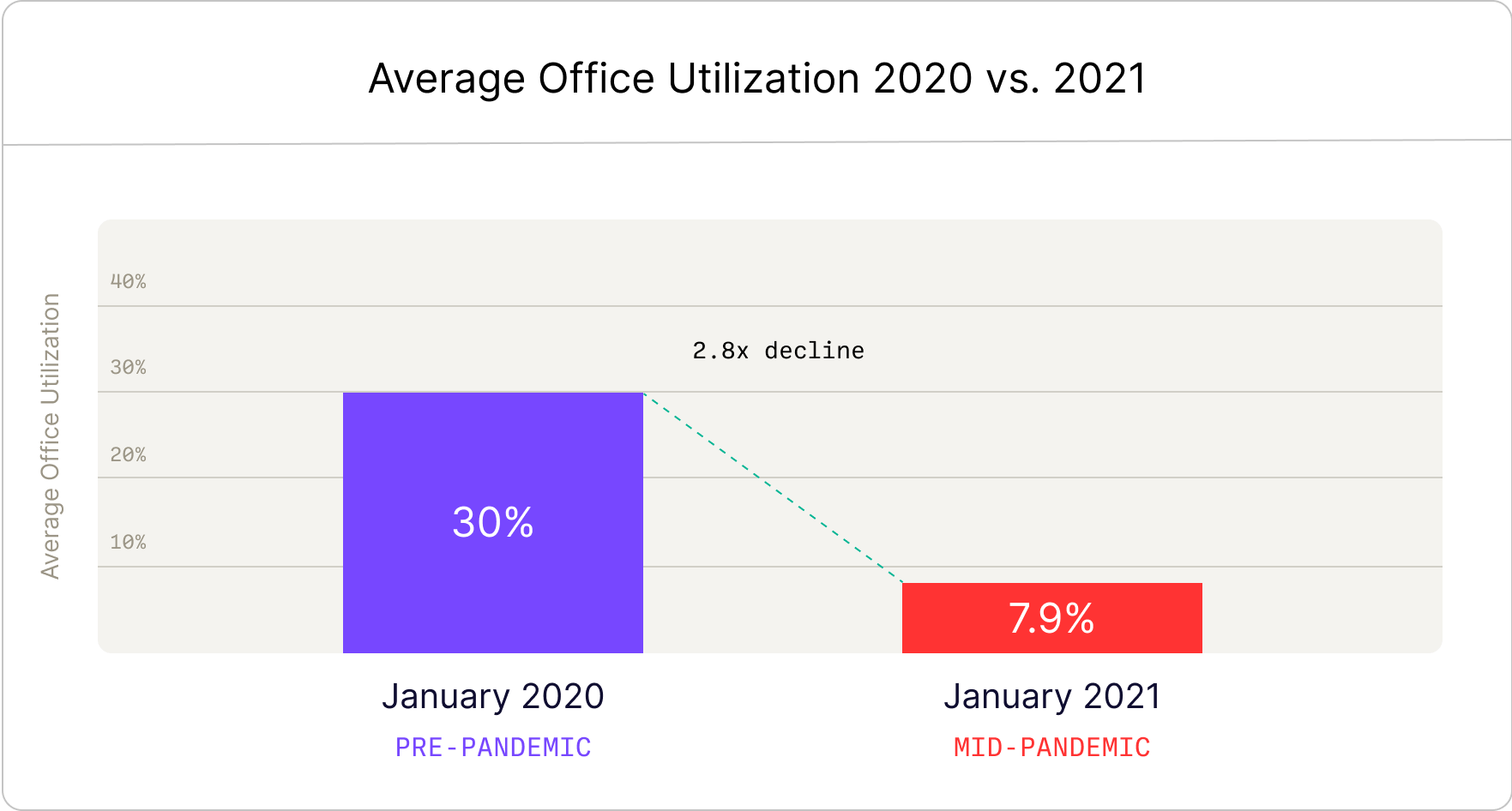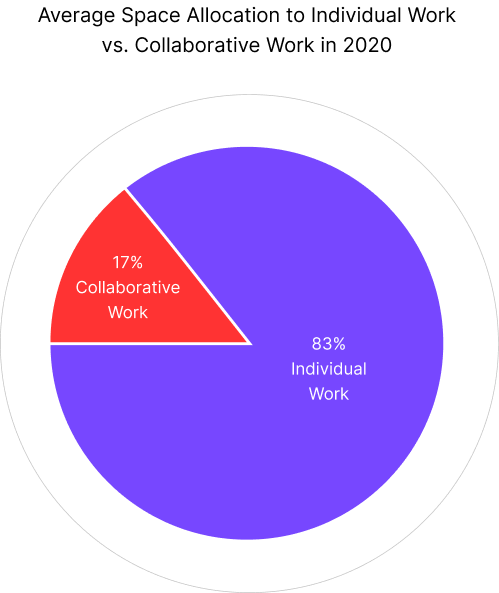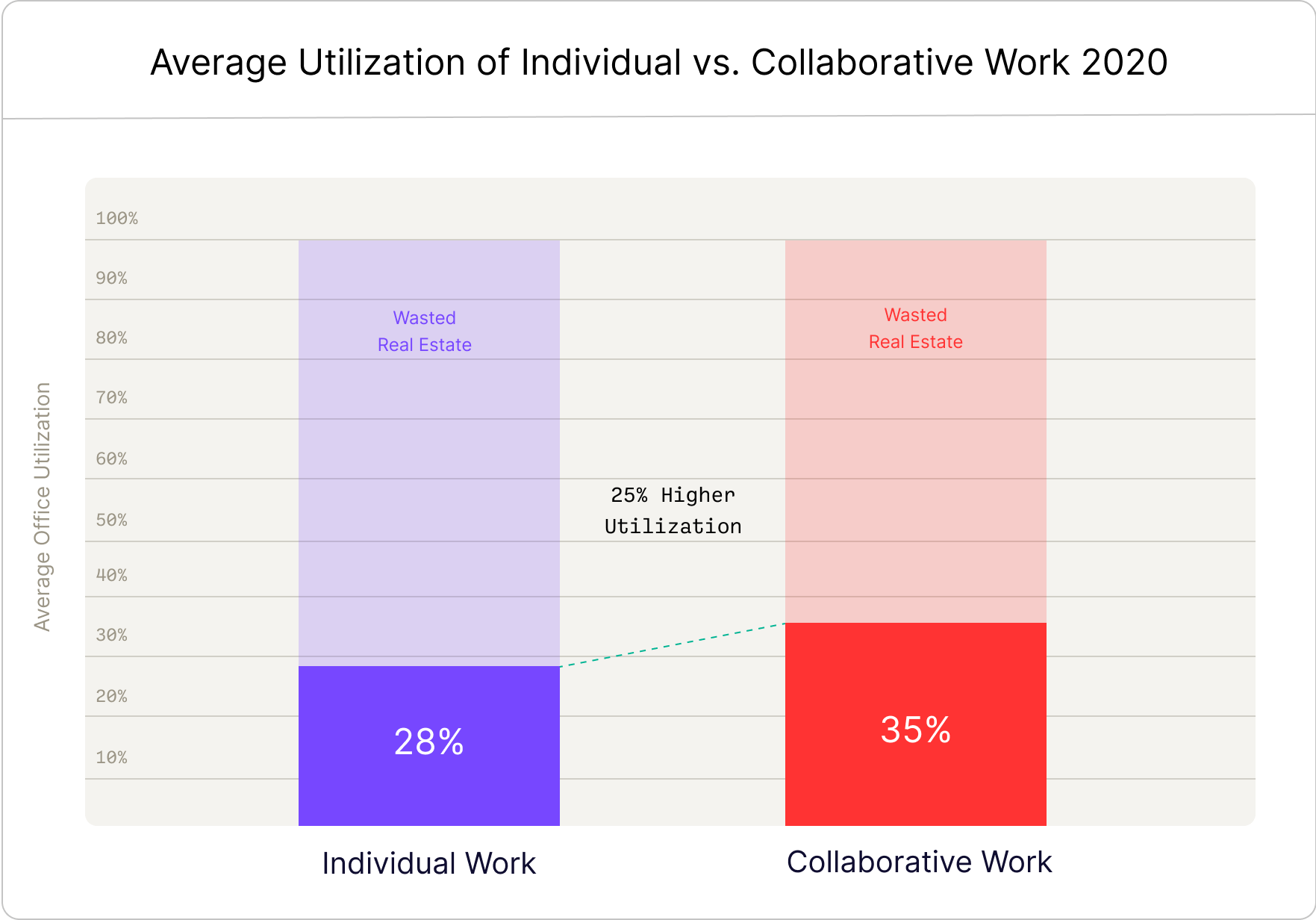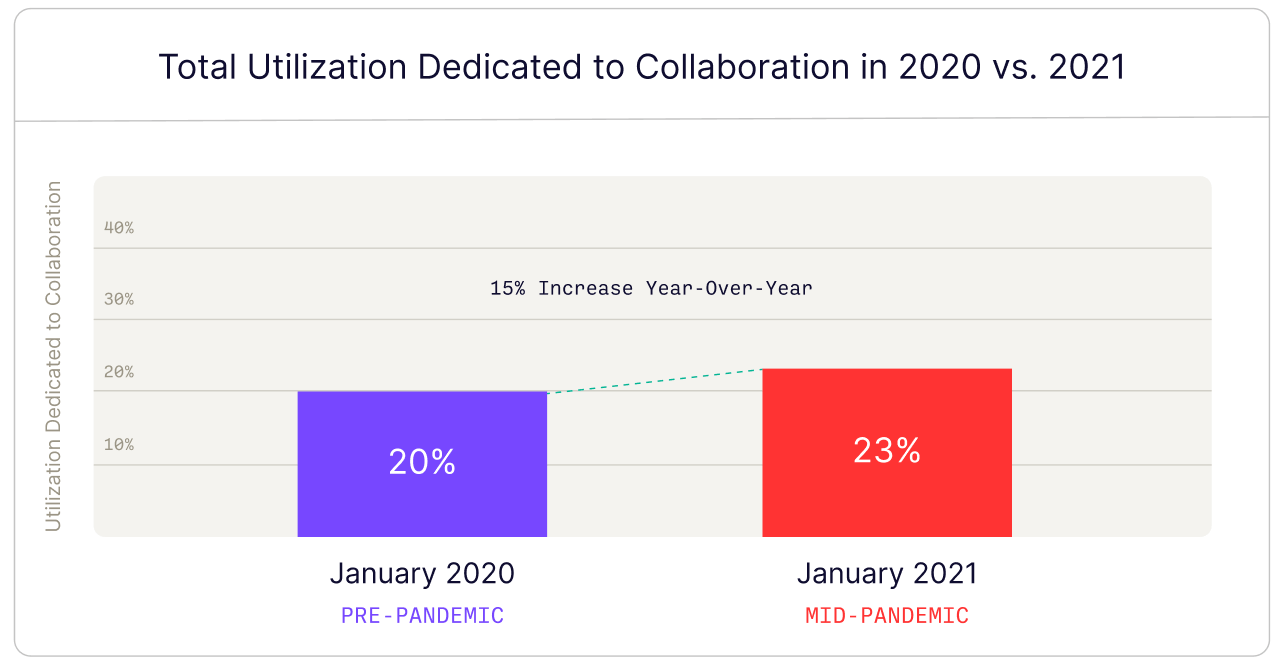New Data Signals How Employees Will Use the Office When They Return

VergeSense is the industry leader in providing enterprises with a true understanding of their occupancy and how their offices are actually being used.
The pandemic brought office life to a halt, giving us a unique opportunity to re-imagine the role of the physical workplace. For example, activity-based work emerged at some workplaces before the pandemic, meaning designating different room and space types to specific purposes. However, now as "working from anywhere" grows stronger, workplace experience leaders must make the office even more purposeful and collaborative to meet expectations of returning employees. But have there been any actual signals for what employees will be anticipating?
Today, our very own VergeSense Think Tank composed of our in-house data science and analytics experts launched its newest data study comparing office utilization pre- and mid-pandemic. The group analyzed representative samples across the 40M square feet of global real estate to look for any signals that could help predict what employee office behavior might look like post-pandemic.
To achieve this, we compared samples from January 2020 (pre-pandemic) and January 2021 (mid-pandemic). Next we grouped space types as either an individual work space (like a desk or office) or a collaborative space (like a conference room, lounge, or huddle room).
Preliminarily, we found that on average, offices were only 30% utilized pre-pandemic. Ultimately, the pandemic didn’t cause office under-utilization — it put a spotlight on it. We believe that companies should no longer strive to “return to normal.” Instead, enterprises should strive to reinvent their office spaces to maximize office utilization while enhancing the company’s global real estate portfolio.
Take a look at the graph below depicting the average percentage of office utilization pre-pandemic in January of 2020 versus mid-pandemic in January of 2021.

Essentially, COVID-19 didn’t trigger a decline in office use, it accelerated it. Before the pandemic, there was already ample opportunity to rethink and repurpose real estate footprints to match the evolving needs of employees. But now, it's an imperative for CRE leaders to demonstrate that a dynamic workplace that meets the needs of the new way of working is a competitive advantage and critical to a company’s overall success.
Which Office Spaces Were Most Utilized Pre-Pandemic?
The office of the past was originally designed for individual, heads-down work. This is a practical space allocation for offices of the past, where employees had clear 9-to-5 schedules and the idea of a hybrid workforce was fun to think about, but simply not a reality.

As the chart above depicts, in January of 2020, 83% of office space was allocated to individual work while only 17% was dedicated to collaborative work.
However, in January of 2020, collaborative spaces were 25% more utilized than spaces dedicated to individual work — a statistic that strongly hints at the modern worker’s preference to mingle more closely with co-workers and swap assigned desks for dynamic seating. In a dynamic workplace, the primary source of workplace value lies within collaboration.

While some companies may revert to cubicles upon their immediate return to the office, constricting employees to a set desk for 8 hours per day will likely only lead to negative employee experience and the realization that the same tasks could have been completed from home. Rather than being a place where an employee’s footprint is merely marked by filling a seat, the role of the workplace will need to shift to become a space that enables outcomes.
The Most Popular Use Of The Office During the Pandemic
Even in the midst of a pandemic, we’re seeing trends showing an increase in the use of office space for collaboration. In early 2020, 20% of overall office utilization was for collaborative work. And, as of early 2021, office utilization for collaborative work rose even higher to 23%.

As employees return to work, competitive companies need to heavily consider focusing on the implementation of collaborative office spaces. We believe now is the time for strategic office redesigns to promote flexible and agile experiences that foster creativity and strengthen employee engagement. Workplace strategists have an opportunity to lean in and potentially create “collaboration hubs”, which could be entire floors or buildings dedicated to collaboration.
Final Thoughts
During the pandemic, average office utilization decreased 2.8 times — not surprisingly. However, interest in using space for in-person collaboration has grown despite all the forces against it: safety concerns, social distancing protocols, and the convenience of Zoom calls. This growth is our loudest signal predicting how employees will value the office moving forward — and it makes sense. In a new world where work location is a choice, employees will return to the office to gain the most important element they have been missing: time with each other.
To gain a deeper understanding of the future of the workplace based on our VergeSense Think Tank's data analysis and research, explore our enterprise workplace study.